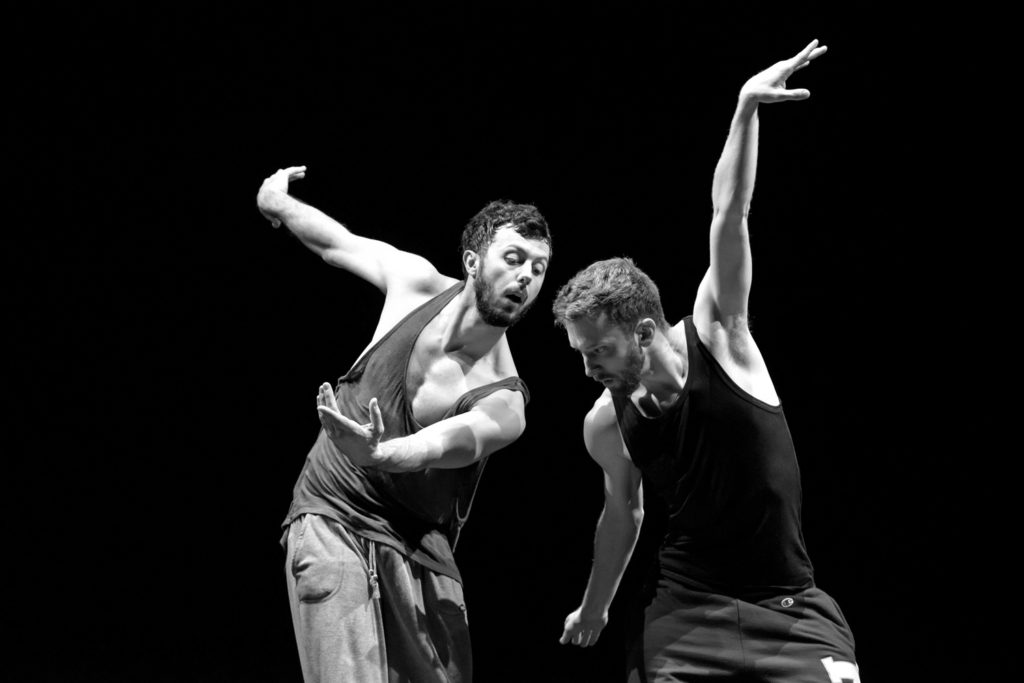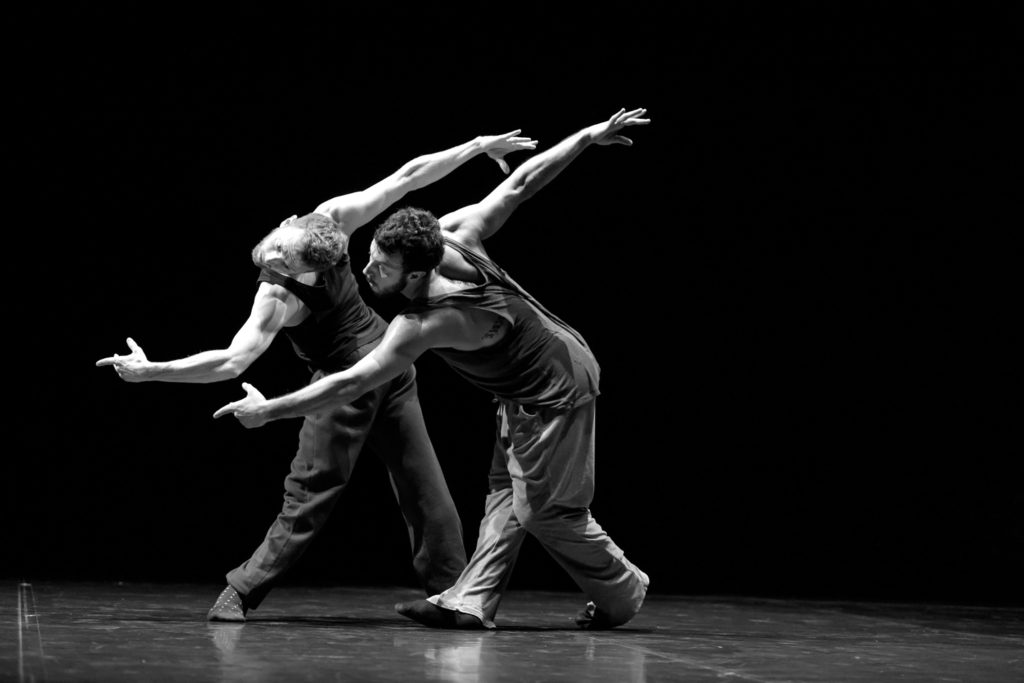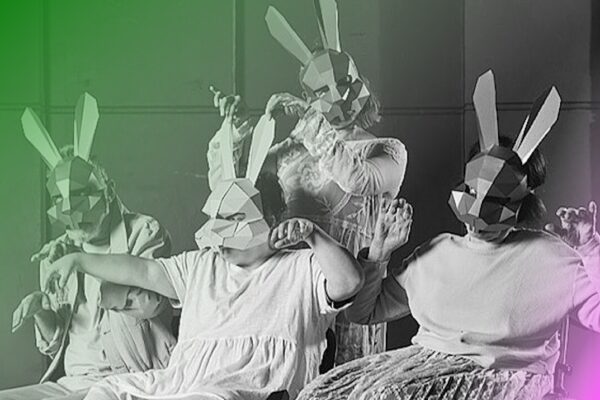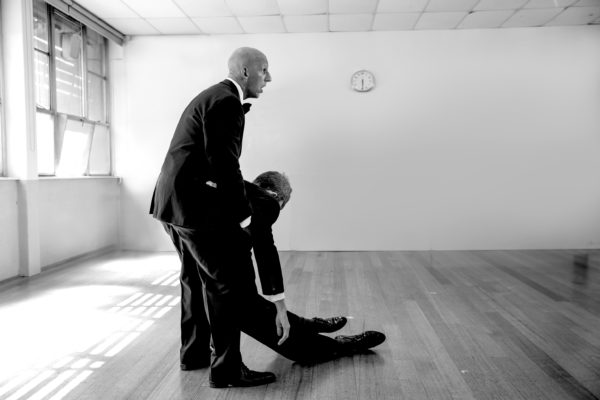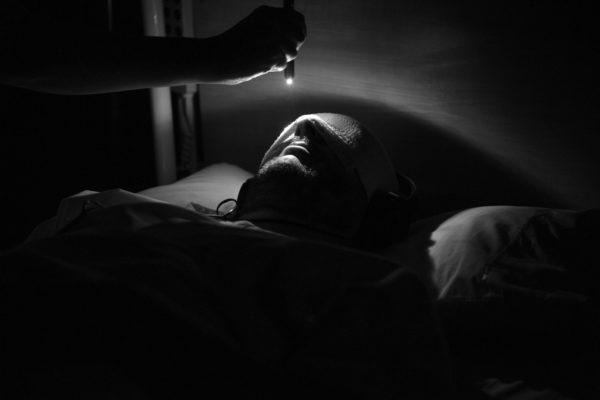A QUIET EVENING OF DANCE
The huge scope of the State Theatre is a curious setting for such an anti-theatrical event as A Quiet Evening Of Dance. Black vinyl floor, white wash lights, dancers in ‘civvies’ and, to begin with, no music at all. The silence is refreshing and reminds one to be less damning of the coughers and rustlers, for that is the human soundscape. The context of where and how ballet is seen is a main concern for choreographer William Forsythe. Forsythe has an ability to go back to the very beginning, the fundamentals, and use the institution of ballet as a vehicle to unpack the body. There is no narrative, no politics and barely a glimmer of relationships between dancers; what is really evident is a commitment to movement with a sense of focused exploration and earnest curiosity.
A Quiet Evening Of Dance contains two remounted pieces and three new, which combine to create an insight into the vocabulary of dance. It is slightly exhausting with its relentless dabbing, mincing and swooping movements, but intriguing for this reason, too. It is not a work that asks you to ‘give over’ but rather to sit up and investigate. Seven dancers touch, glance, pose and thread with astounding technique. Whether skill alone is enough is a constant debate. Does incredible skill negate the need for audience connection, thematic stimulation or a sense of journey? This work has skill combined with deep intention and a sense of silliness, which helps it to escape self-indulgence. A stand out is Dialogue (DUO2015), which comes the closest to a sense of heart where Brigel Gjoka and Riley Watts run, dive, swim and soar to the sound of birdsong.
The second half of the evening is the right moment to add a sensuous score by 18th-century French harpsichord composer Jean-Philippe Rameau. Forsythe wants you to understand – to enjoy but to know where the movements have come from: “So after all that demonstration – this prelude where we are preparing you to watch, showing you how to watch – we put these things in the context of music and watch how they come into another kind of focus: the same material, but radically recontextualised.”
Apart from the music, and the culmination of seven dancers onstage rather than the preceding duos and trios creating a mass of colour and syncronisation, the evening does not ever kick into another gear. The reason for this is probably as simple as: it was not Forsythe’s intention to give an experience of transcendence, and yet there is something wanting. A Quiet Evening of Dance left one feeling full of an unnameable feeling that sat somewhere, shifting in the body, lonely, looking for a story.

